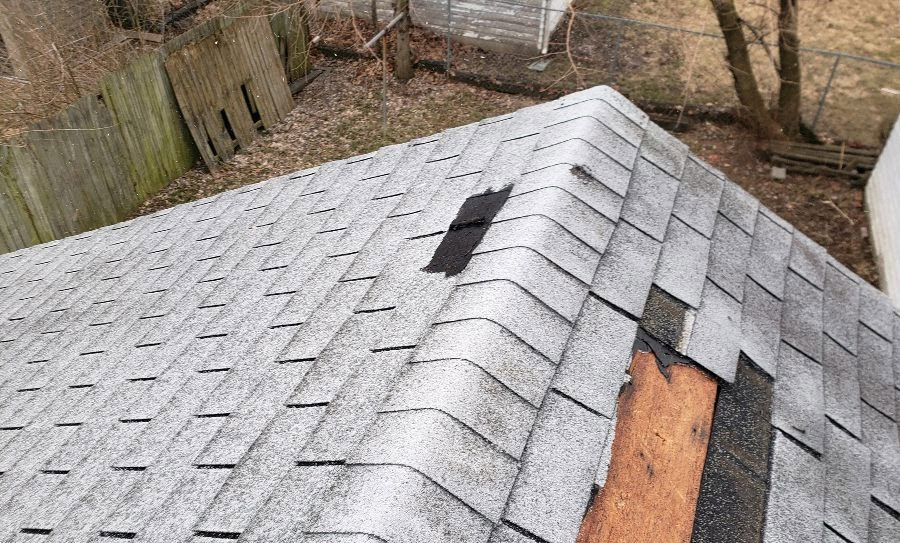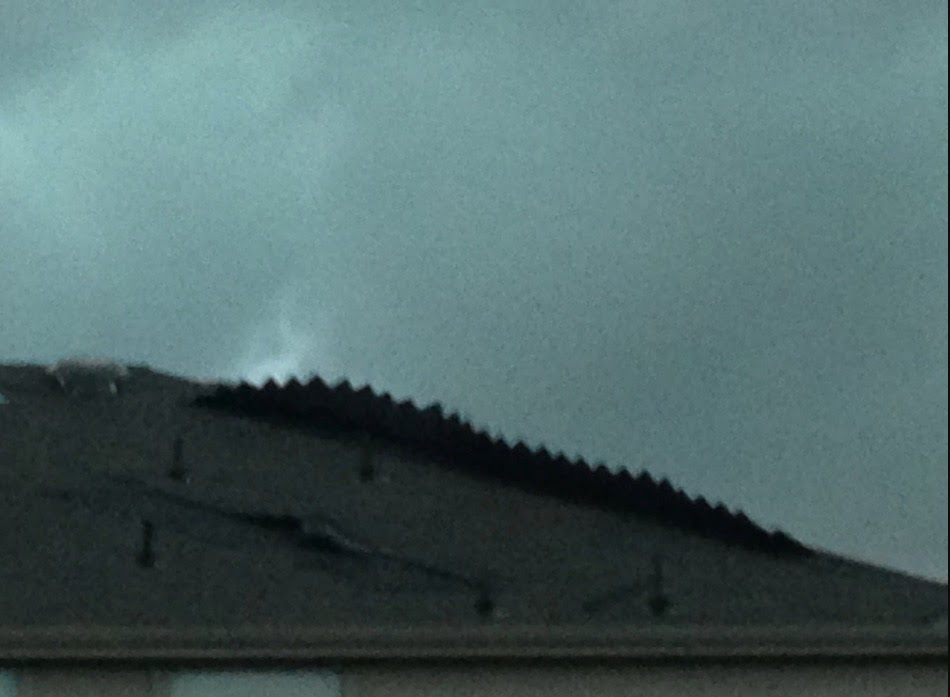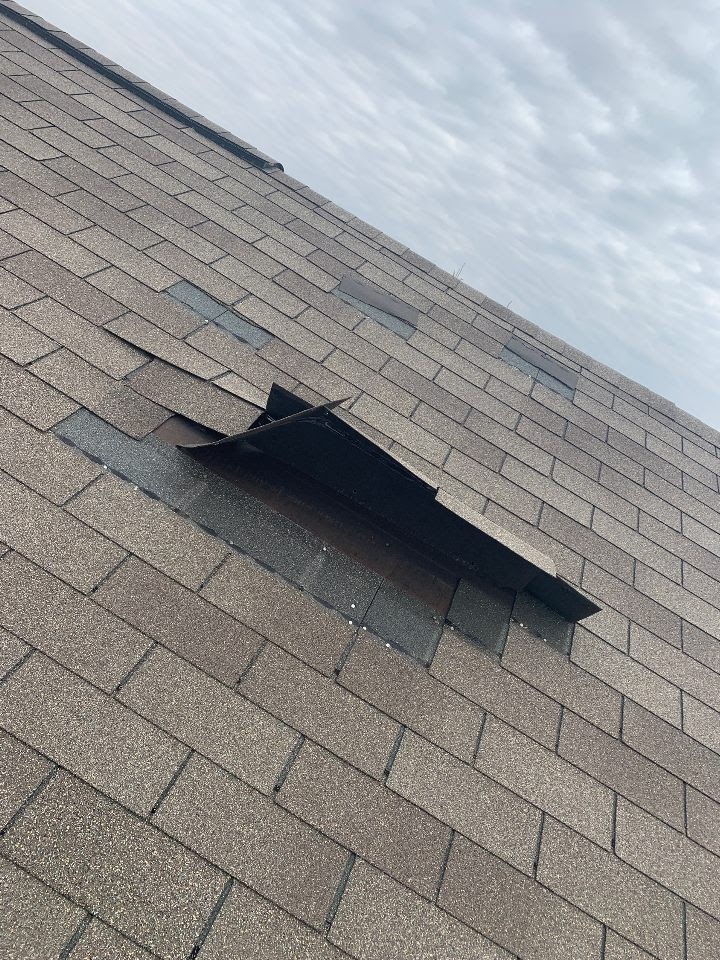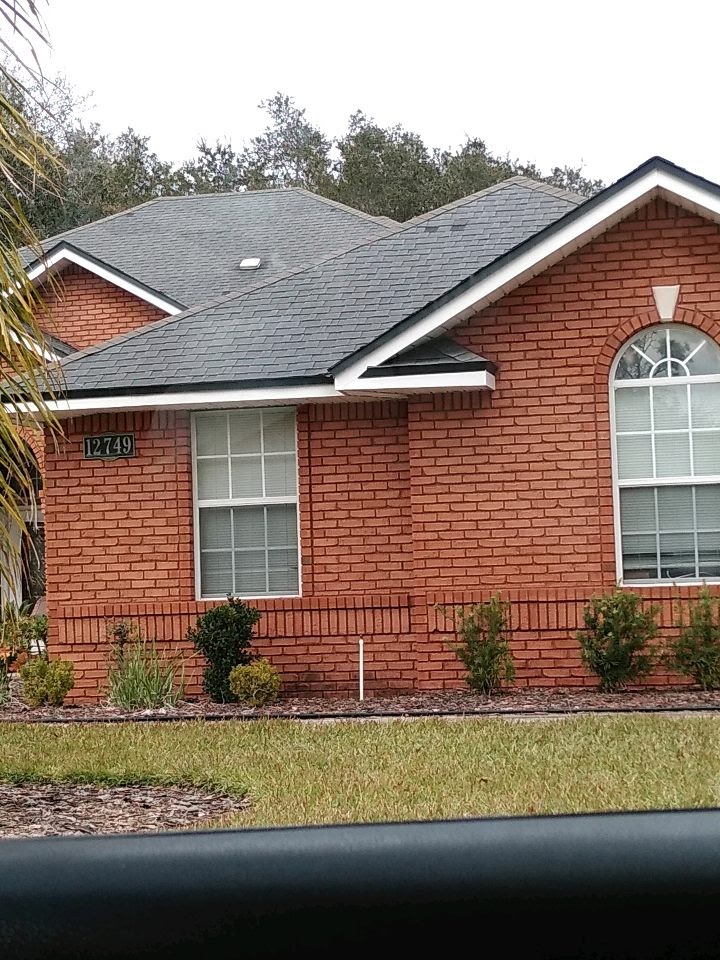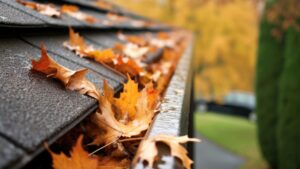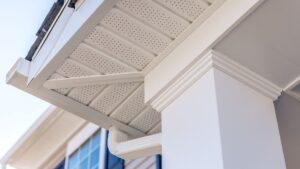The winds come and you start to see those shingles fly! You look around your home and see shingles laying in your yard, maybe even a gutter about to fall off. Wind damage can be horrific!
Heavy winds can cause missing shingles, gutter problems, and even leaks.
Most shingle roofs are rated to withstand 90 mph winds, but damage can start when your roof experiences 50 mph winds. Knowing how to check your roof for damage can save you from waking up one night to a leak dripping on your head.
What is Wind Damage?
When high winds happen, they hit your roof in every direction. Instead of moving evenly across the surface, high winds get up around the corner and edges of your roof. This can cause shingles to pull up and off, compromising the integrity of your roof.
High winds can cause your roof to begin “lifting”. Your shingles may look intact from the ground, but with high winds, a suction effect can lift the shingles up and pull the nails out.
You may even notice during high winds that an entire section of shingles looks like it’s about to fly right off. This is known as “zippering”. Zippering happens when the wind lifts one shingle, tearing out the nail that is securing it. Eventually, shingles behind that will follow.
Example of Zippering
High winds can bring down trees, cause limbs to fall, and even debris (such as branches, garbage, or even patio furniture) to go flying and causing even more damage. This could cause an issue worse than a few missing shingles!
How to Check for Damage?
-
Check for Roof Leaks – This is the easiest thing to check! If it’s raining and you have water coming into your home, it’s time to call the experts.
-
Missing Shingles – Strong winds, rain, and falling tree branches can cause shingles to end up all over the place.
-
Curling Shingles – Look for shingles that have begun to curl up. You will typically find these around the edges, corners, at the ridge, and near the chimney.
-
Lifting Shingles – On these shingles, the nail has loosened causing them to begin to lift. This increases your likelihood of a leak.
-
Check Your Gutters – Loose granules from your shingles can end up your gutters. When cleaning your gutters check for those small granules.
When Do I Call the Professionals?
If you have checked your roof and you are noticing shingles missing, shingles starting to curl, and even getting leaks, it’s time to call the professionals.
Doing an initial roof inspection yourself is a great way to stay ahead of the damage. But, when you notice the damage is increasing it’s time to call in the professionals for a full roof inspection.
On the bright side though, if you have enough storm-related damage you may be well on your way to having your insurance company cover a new roof.
